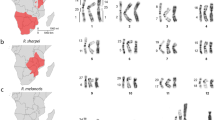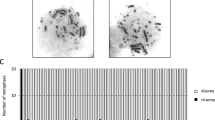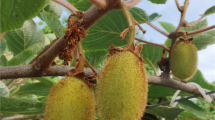Abstract
IT has been shown that the chromosomes of Datura (American Naturalist, vol. 56, pp. 339–346, 1922), Hyacinthus (Genetics, vol. 10, pp. 59–71, 1925) and Uvularia (Journal of Genetics, in press), for example, are combined side by side, and end to end, at the reduction division. If n is the haploid number of chromosomes, this finding of partners and conjugation of chromosomes points to the presence of 2n different attractions. (It is easily demonstrated in Uvularia that homologous ends of each chromosome are opposed, for the ends of the chromosomes differ in appearance.) This is confirmed by the formation of trivalents, quadiivalents, quinquevalents, etc., in triploid, tetraploid, and other plants with more than two homologous chormosomes; and also be the fact that none of the 12 chromosomes of the haploid Datura pair at the reduction division (Fig. 1). Such a number of attracting forces seems perhaps unexampled in physics.
This is a preview of subscription content, access via your institution
Access options
Subscribe to this journal
Receive 51 print issues and online access
$199.00 per year
only $3.90 per issue
Buy this article
- Purchase on SpringerLink
- Instant access to full article PDF
Prices may be subject to local taxes which are calculated during checkout
Similar content being viewed by others
References
Trans. Roy. Soc., A, 224, 371–419.
Phy. Rev., September 1924.
Proc. Roy. Soc., June 1923..
Author information
Authors and Affiliations
Rights and permissions
About this article
Cite this article
BELLING, J. The Attraction between Homologous Chromosomes. Nature 116, 244 (1925). https://doi.org/10.1038/116244c0
Issue date:
DOI: https://doi.org/10.1038/116244c0



